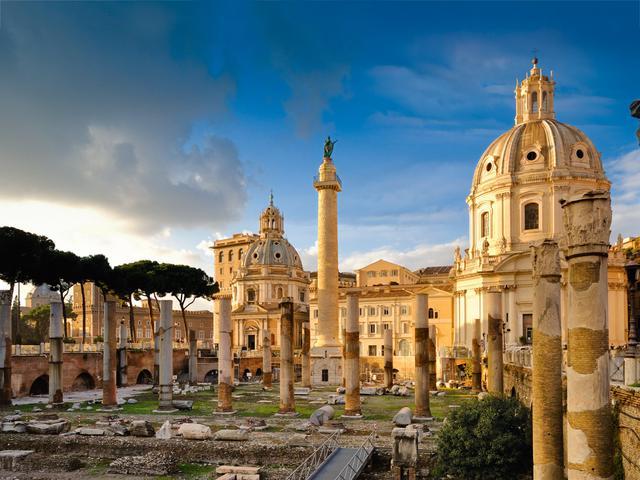Trajan's Column

Trajan's Column is not only a remarkable piece of ancient Roman architecture but also a significant historical monument that tells the story of Emperor Trajan's military campaigns against the Dacians. Standing at an impressive height of 30 meters, the column is a symbol of Roman power and victory. The intricate spiral bas-relief that wraps around the column depicts scenes of battle, triumph, and sacrifice, offering a detailed narrative of Trajan's conquests in what is now modern-day Romania.
The construction of Trajan's Column was a monumental feat, with 18 massive blocks of Carrara marble weighing approximately 40 tons each. The sculptural frieze, measuring about 200 meters in length, winds around the column 23 times, showcasing the artistic skill and craftsmanship of the ancient Roman sculptors. Visitors can marvel at the detailed carvings that bring to life the military campaigns and daily life of the Roman soldiers.
One of the most fascinating features of Trajan's Column is the spiral staircase inside, consisting of 185 steps that lead to a viewing platform at the top. From this vantage point, visitors can enjoy panoramic views of Rome and the surrounding area, offering a unique perspective of the city's historic landmarks. The column was originally crowned with a statue of an eagle, symbolizing Roman power, before being replaced by a statue of Trajan himself. In the 16th century, Pope Sixtus V commissioned a statue of Saint Peter to be placed atop the column, a symbol of the Christian influence in Rome.
Located in Trajan's Forum, near the Quirinal Hill and the Roman Forum, Trajan's Column is a must-see attraction for history enthusiasts and art lovers alike. The monument stands as a testament to the military prowess and cultural achievements of the Roman Empire, providing a glimpse into the ancient world through its intricate carvings and historical significance. Whether you're exploring Rome for the first time or revisiting its iconic landmarks, a visit to Trajan's Column offers a unique opportunity to immerse yourself in the rich history and artistry of ancient Rome.
© ChatGPT 3.5
The purpose of Trajan's Column was threefold: to mark the extent of the mountain displaced by the forum, to house the emperor's ashes and to commemorate the conquest of Dacia as a victory for Trajan.
After Trajan's death in 117, the Roman Senate voted that his ashes be buried in a golden urn at the base of the column. Currently the ashes are no longer there.